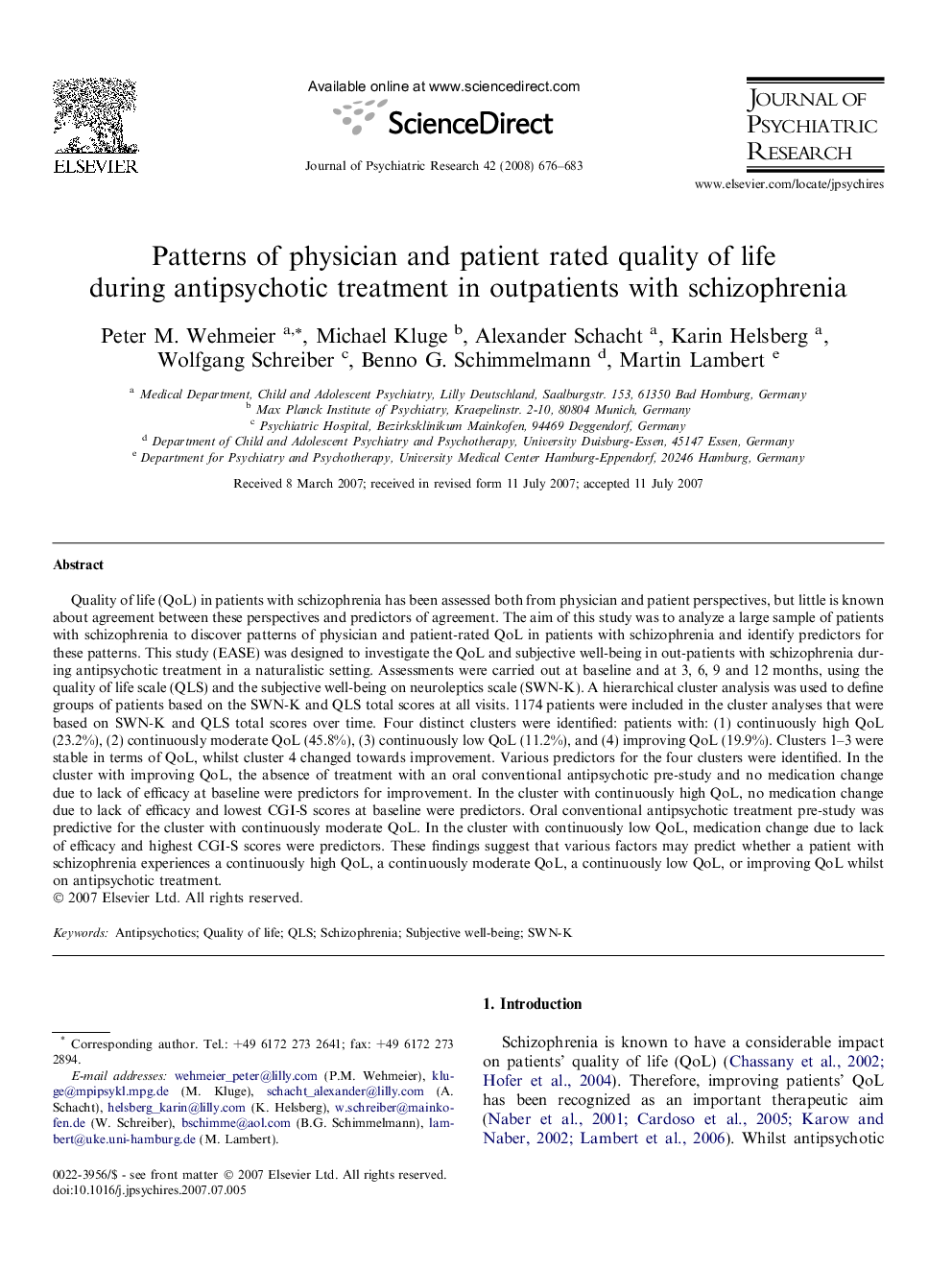| کد مقاله | کد نشریه | سال انتشار | مقاله انگلیسی | نسخه تمام متن |
|---|---|---|---|---|
| 327862 | 543006 | 2008 | 8 صفحه PDF | دانلود رایگان |

Quality of life (QoL) in patients with schizophrenia has been assessed both from physician and patient perspectives, but little is known about agreement between these perspectives and predictors of agreement. The aim of this study was to analyze a large sample of patients with schizophrenia to discover patterns of physician and patient-rated QoL in patients with schizophrenia and identify predictors for these patterns. This study (EASE) was designed to investigate the QoL and subjective well-being in out-patients with schizophrenia during antipsychotic treatment in a naturalistic setting. Assessments were carried out at baseline and at 3, 6, 9 and 12 months, using the quality of life scale (QLS) and the subjective well-being on neuroleptics scale (SWN-K). A hierarchical cluster analysis was used to define groups of patients based on the SWN-K and QLS total scores at all visits. 1174 patients were included in the cluster analyses that were based on SWN-K and QLS total scores over time. Four distinct clusters were identified: patients with: (1) continuously high QoL (23.2%), (2) continuously moderate QoL (45.8%), (3) continuously low QoL (11.2%), and (4) improving QoL (19.9%). Clusters 1–3 were stable in terms of QoL, whilst cluster 4 changed towards improvement. Various predictors for the four clusters were identified. In the cluster with improving QoL, the absence of treatment with an oral conventional antipsychotic pre-study and no medication change due to lack of efficacy at baseline were predictors for improvement. In the cluster with continuously high QoL, no medication change due to lack of efficacy and lowest CGI-S scores at baseline were predictors. Oral conventional antipsychotic treatment pre-study was predictive for the cluster with continuously moderate QoL. In the cluster with continuously low QoL, medication change due to lack of efficacy and highest CGI-S scores were predictors. These findings suggest that various factors may predict whether a patient with schizophrenia experiences a continuously high QoL, a continuously moderate QoL, a continuously low QoL, or improving QoL whilst on antipsychotic treatment.
Journal: Journal of Psychiatric Research - Volume 42, Issue 8, July 2008, Pages 676–683